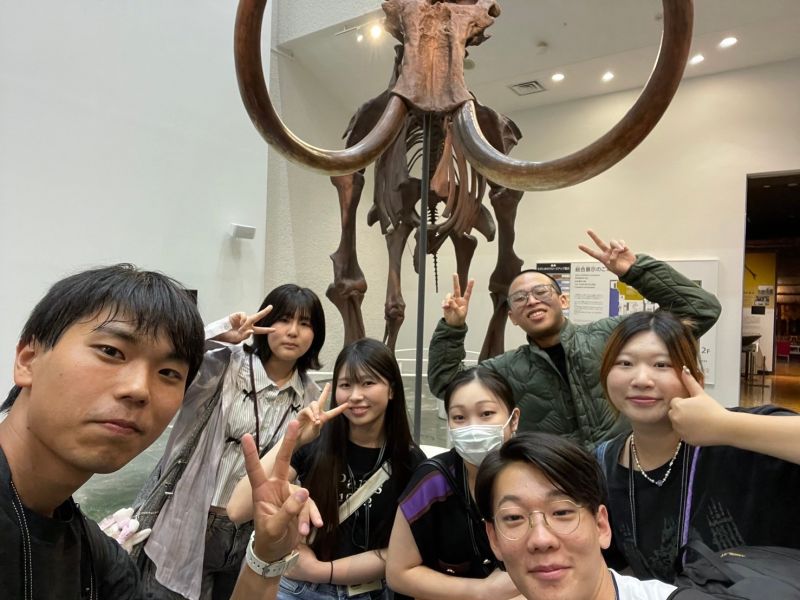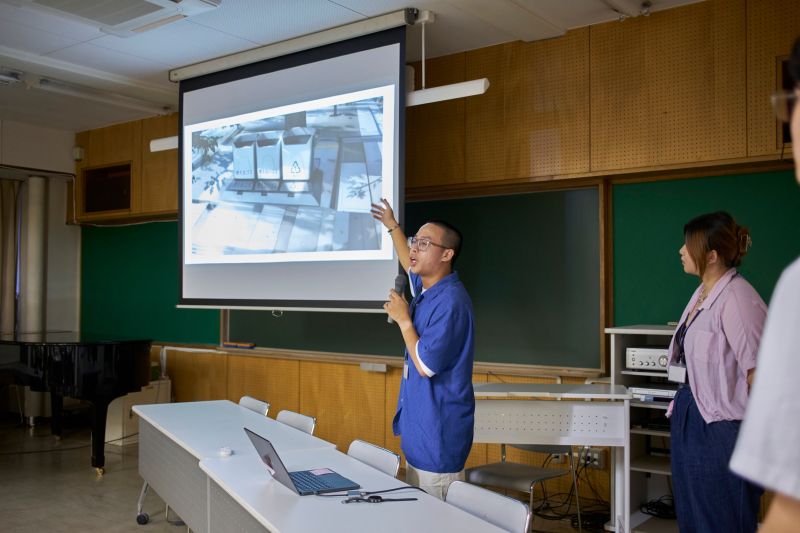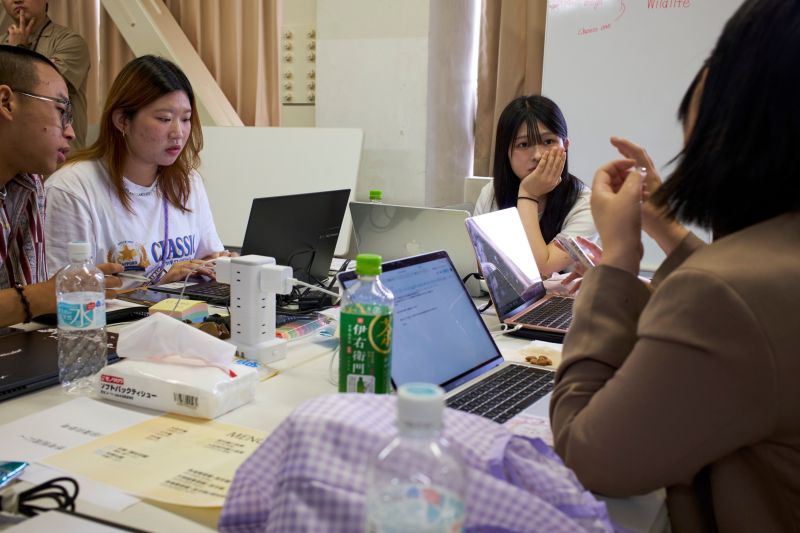2024.10.18
Coexistence Human And Wildlife Workshop - Master's Student:鍾宛儒 / Exchange Location: Japan
《Research Experience》
The 2024 "Human and Wildlife Coexistence Hokkaido Workshop" provided a unique opportunity to explore Japanese design culture and engage in practical exchanges with local design professionals. Over the five days, we studied Sapporo's natural history and tackled the challenge of human-bear coexistence. This experience significantly deepened my understanding of design, particularly by approaching the issue from the perspective of brown bears, a concept both challenging and enlightening. Traditionally, design education emphasizes "human-centered" thinking, but this time I learned to consider the needs of animals, fostering harmony between humans and nature in the design process. During our visit to the Hokkaido Museum, I was moved by the historical interactions between the indigenous people and the brown bears, which led me to reconsider the value of ecological balance in design. Collaborating with Japanese students was also a valuable experience; their more reserved, practical approach contrasted with our focus on innovation and broad conceptual thinking. This taught me how to integrate diverse perspectives in a multicultural context. With the help of KJ method, we proposed two solutions: designing semi-underground garbage bins to reduce the likelihood of bears entering the city due to food smells, and creating an invisible barrier using scent to prevent bears from approaching human areas. This workshop not only taught me how to use design tools in a cross-cultural setting but also deepened my understanding of how cultural backgrounds shape design thinking. The experience will have a lasting impact on my research in local revitalization and brand building. Moving forward, I will place greater emphasis on ecological balance and cultural diversity in my design work, and I will encourage more independent discussions and creative brainstorming in future workshops to foster cross-cultural collaboration in design.
Event pic:






Back +
The 2024 "Human and Wildlife Coexistence Hokkaido Workshop" provided a unique opportunity to explore Japanese design culture and engage in practical exchanges with local design professionals. Over the five days, we studied Sapporo's natural history and tackled the challenge of human-bear coexistence. This experience significantly deepened my understanding of design, particularly by approaching the issue from the perspective of brown bears, a concept both challenging and enlightening. Traditionally, design education emphasizes "human-centered" thinking, but this time I learned to consider the needs of animals, fostering harmony between humans and nature in the design process. During our visit to the Hokkaido Museum, I was moved by the historical interactions between the indigenous people and the brown bears, which led me to reconsider the value of ecological balance in design. Collaborating with Japanese students was also a valuable experience; their more reserved, practical approach contrasted with our focus on innovation and broad conceptual thinking. This taught me how to integrate diverse perspectives in a multicultural context. With the help of KJ method, we proposed two solutions: designing semi-underground garbage bins to reduce the likelihood of bears entering the city due to food smells, and creating an invisible barrier using scent to prevent bears from approaching human areas. This workshop not only taught me how to use design tools in a cross-cultural setting but also deepened my understanding of how cultural backgrounds shape design thinking. The experience will have a lasting impact on my research in local revitalization and brand building. Moving forward, I will place greater emphasis on ecological balance and cultural diversity in my design work, and I will encourage more independent discussions and creative brainstorming in future workshops to foster cross-cultural collaboration in design.
Event pic:






